Canaan United Methodist Church
2 Church Street
Canaan (North Canaan), CT
Images
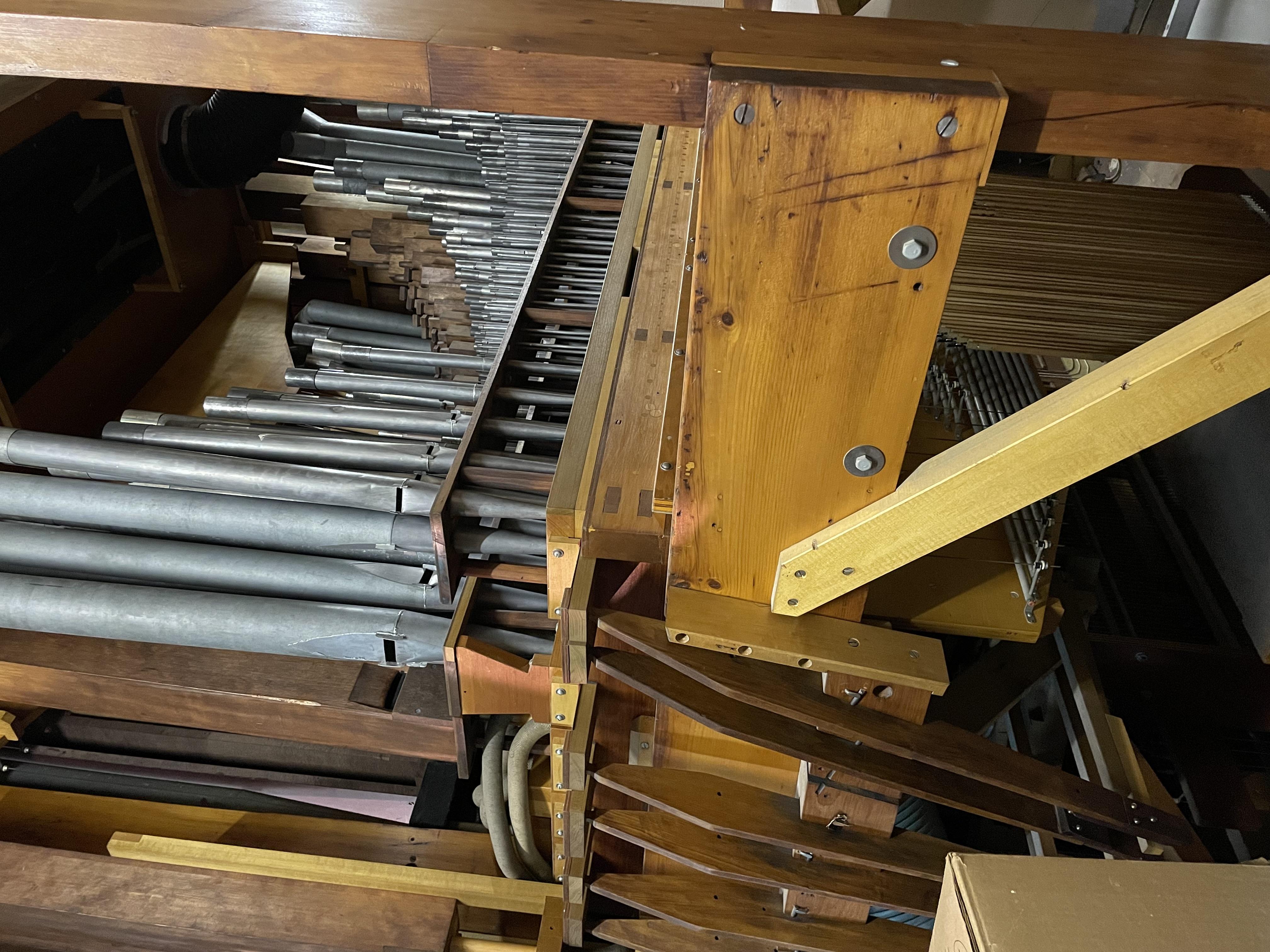 2023-08-12 - Great pipework from behind the facade (Photograph by William Degan/William Degan)
2023-08-12 - Great pipework from behind the facade (Photograph by William Degan/William Degan)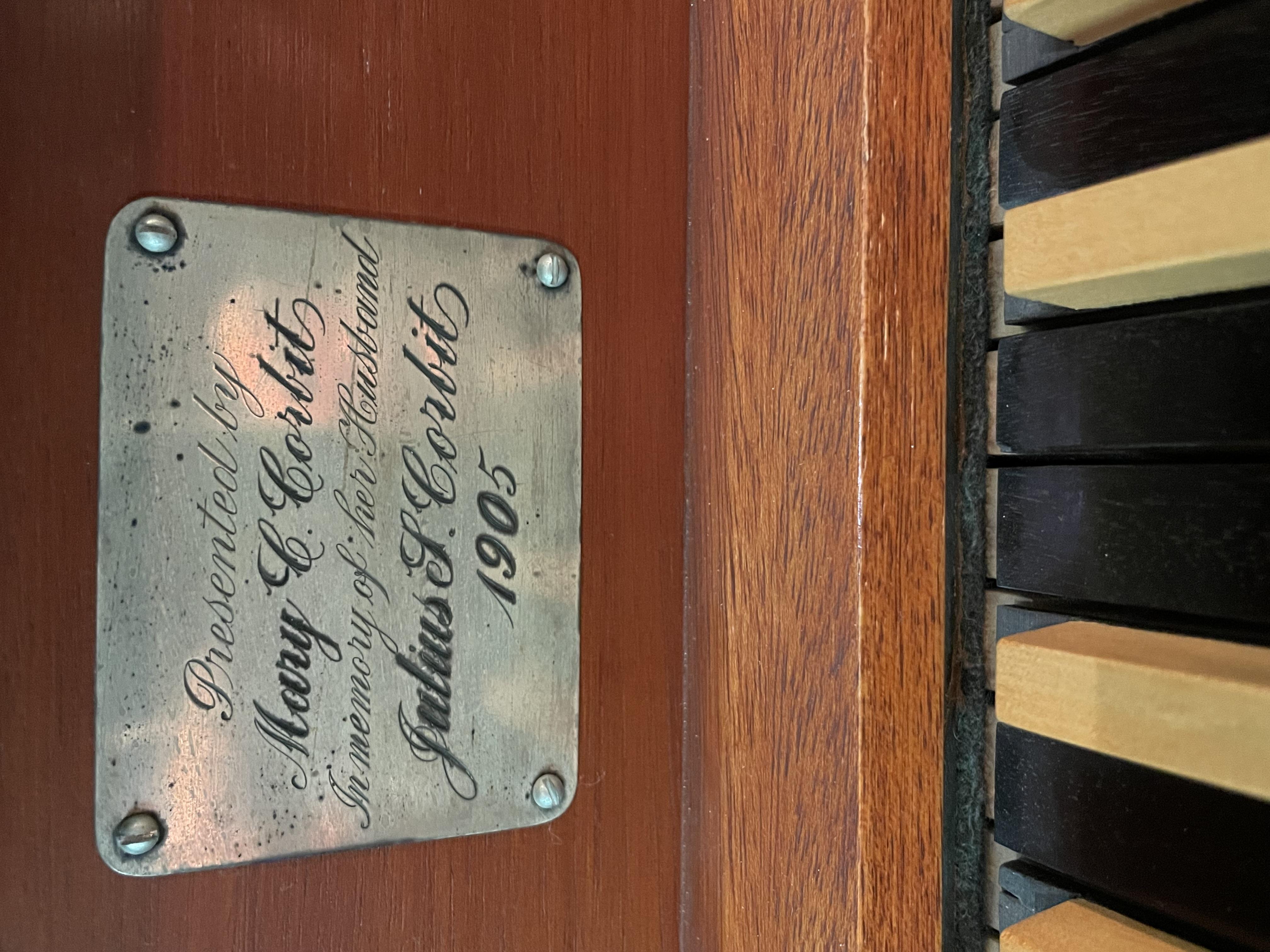 2023-08-12 - Console plaque honoring 1905 organ rebuild (Photograph by William Degan/William Degan)
2023-08-12 - Console plaque honoring 1905 organ rebuild (Photograph by William Degan/William Degan)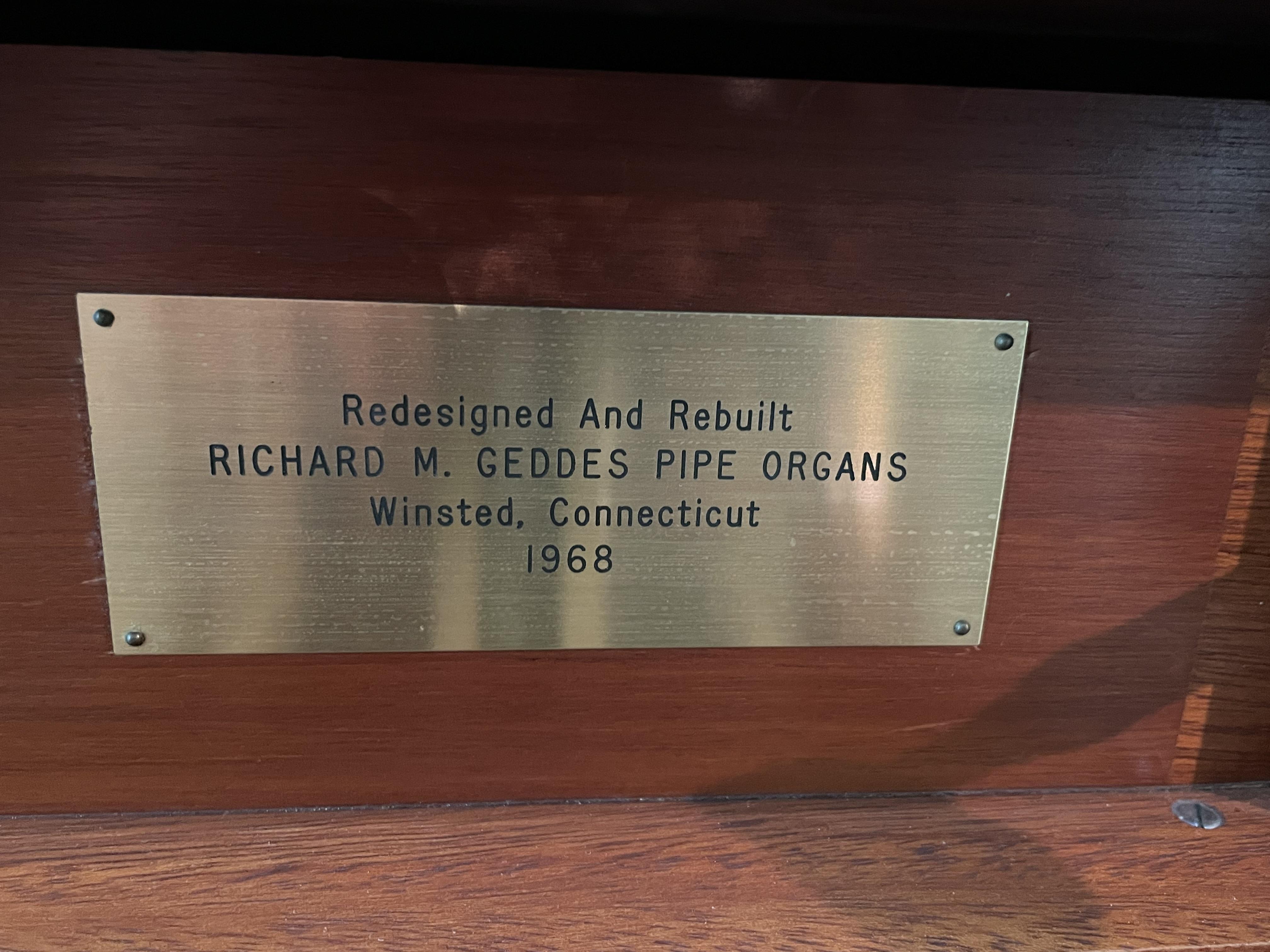 2023-08-12 - Builder's nameplate (it is clear that Geddes worked on the keyboards and pedalboard in 1968. Still 56 note compass, though) (Photograph by William Degan/William Degan)
2023-08-12 - Builder's nameplate (it is clear that Geddes worked on the keyboards and pedalboard in 1968. Still 56 note compass, though) (Photograph by William Degan/William Degan)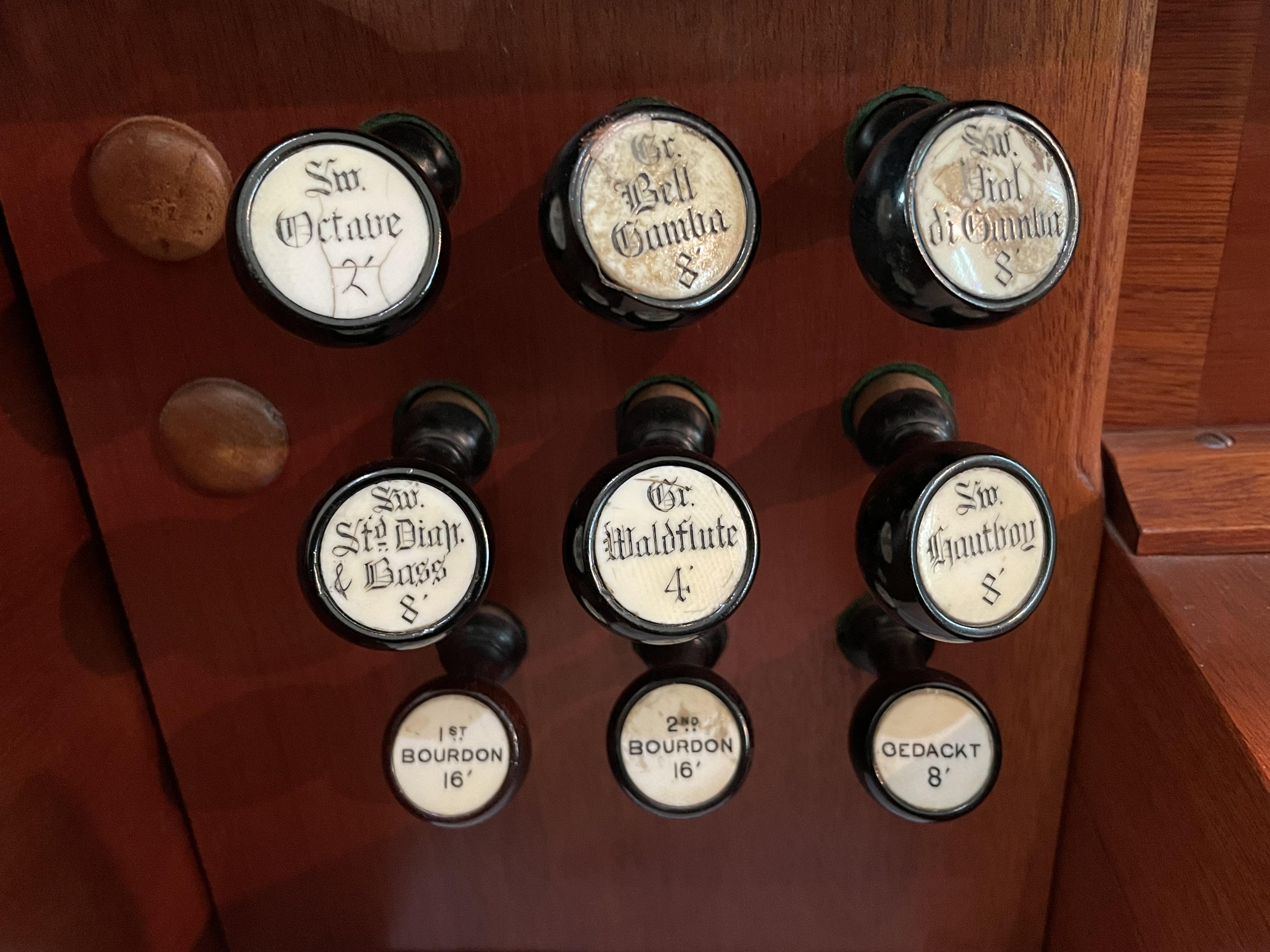 2023-08-12 - Left stopjamb (curious there's no 4' stop on the Swell, unless mis-marked. There was a blower circuit problem the day I visited so I could not check) (Photograph by William Degan/William Degan)
2023-08-12 - Left stopjamb (curious there's no 4' stop on the Swell, unless mis-marked. There was a blower circuit problem the day I visited so I could not check) (Photograph by William Degan/William Degan)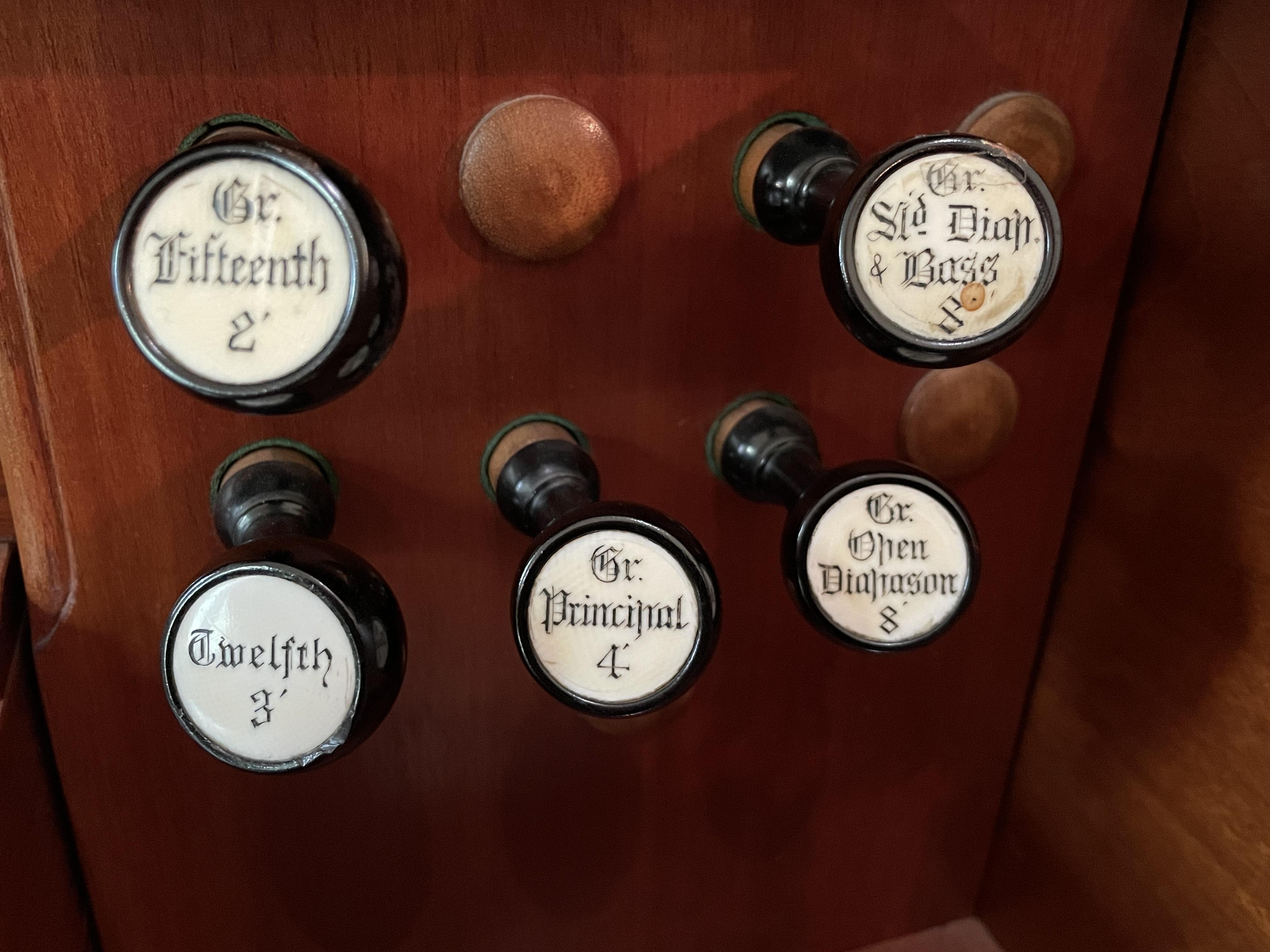 2023-08-12 - Right stopjamb (curious how the stops are neither vertical nor terraced. Did Johnson do this?) (Photograph by William Degan/William Degan)
2023-08-12 - Right stopjamb (curious how the stops are neither vertical nor terraced. Did Johnson do this?) (Photograph by William Degan/William Degan)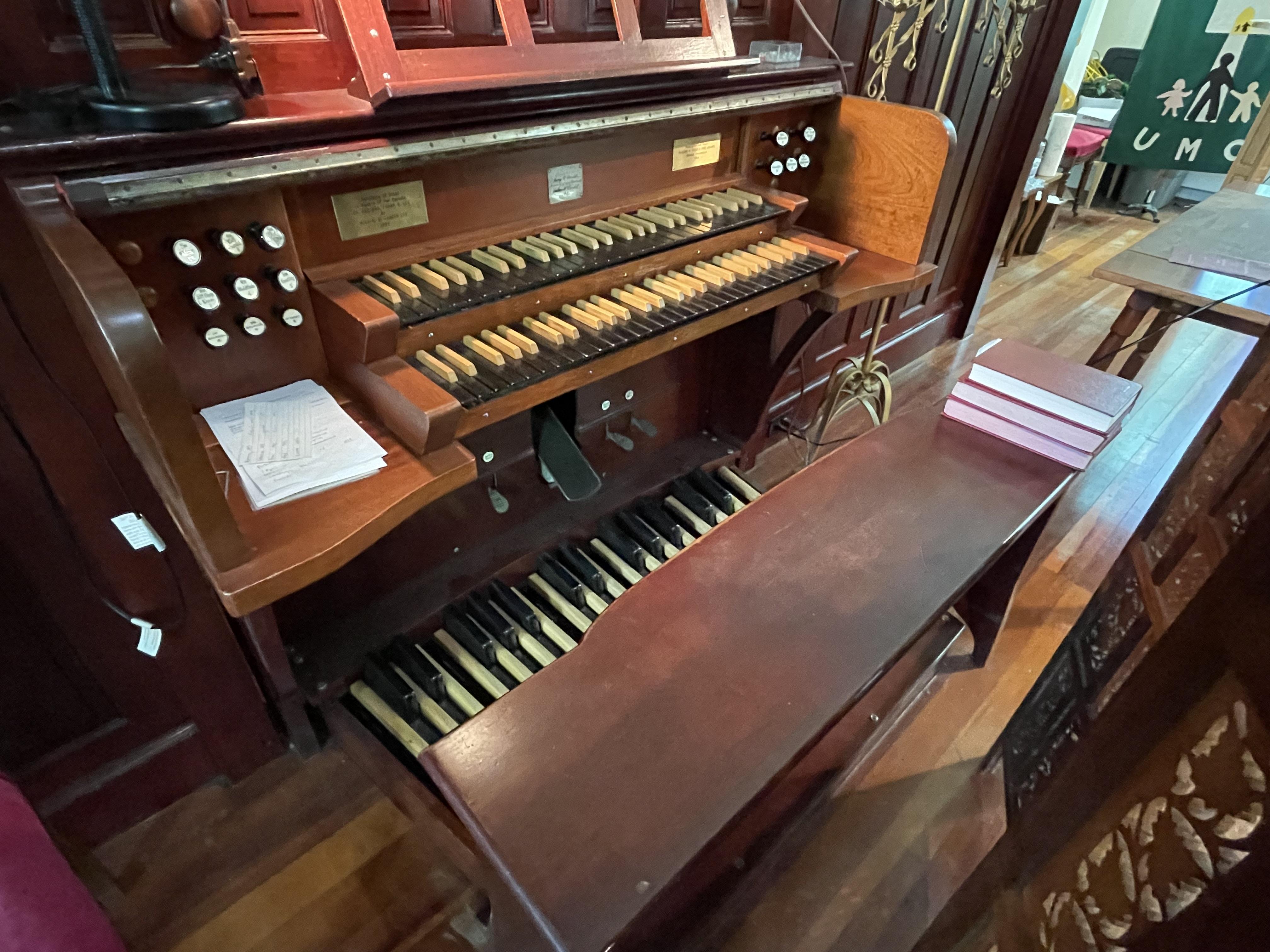 2023-08-12 - Console (this is Geddes 1968 work) (Photograph by William Degan/William Degan)
2023-08-12 - Console (this is Geddes 1968 work) (Photograph by William Degan/William Degan)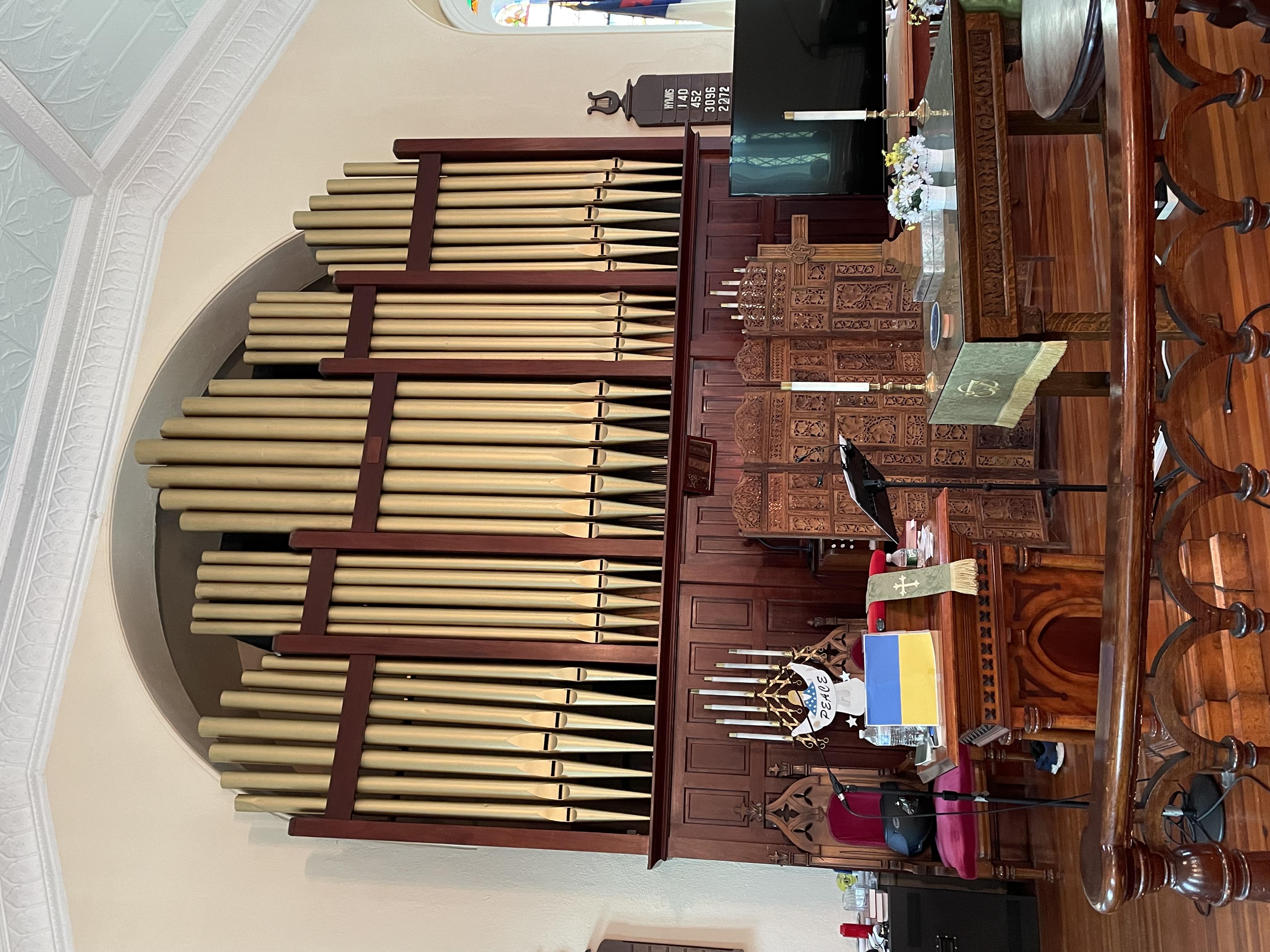 2023-08-12 - Organ facade (Photograph by William Degan/William Degan)
2023-08-12 - Organ facade (Photograph by William Degan/William Degan)
Consoles
Main
- Organ type: Traditional With a Keyboard Cover That Can Be Lifted To Form a Music Rack
- Console position: Keydesk Attached
- 2 manuals
- 3 divisions
- Key action Type: Mechanical (Details Unknown)
- Stop action Type: Mechanical
- Stop layout Type: Drawknobs in Horizontal Rows on Flat Jambs
- Manual compass: 56 notes
- Pedal compass: 30 notes
- Pedal Type: Concave Radiating (Details Unknown)
- Expression Type: Balanced Expression Shoes/Pedals (Details Unknown)
- Combination action: None
- Has hitchdown couplers
Main
- Organ type: Traditional Without Cover
- Console position: Keydesk Attached
- 2 manuals
- 14 stops
- 17 registers
- 3 divisions
- Key action Type: Mechanical (Details Unknown)
- Stop action Type: Mechanical
- Stop layout Type: Drawknobs in Horizontal Rows on Flat Jambs
- Manual compass: 56 notes
- Pedal compass: 30 notes
- Pedal Type: Concave Radiating (Not Meeting AGO Standards)
- Expression Type: Balanced Expression Shoes/Pedals (Meeting AGO Standards)
- Combination action: None
Notes
2004-10-30 - From Litchfield in 1874? Rebuilt A. L. Conkey & Son, 1905; rebuilt Richard Geddes 1968. -Database Manager
2023-08-15 - I visited the church 8/12/23, hoping to hear it. The blower would not turn on. A new circuit box had been installed in the church that week, so presumably the blower was not properly connected. The organ is used occasionally so some of it plays, but it is not maintained. -William Degan
2023-08-16 - Per William Degan the church was built in 1867/8. Organ facade looks like ca. 1870. -Brad Engelland
2023-09-25 - The facts is this case, and as explained in various versions of the Johnson opus list, conflict. The Litchfield church bought an Austin, No. 368 in 1914. The organ in Canaan was given in 1905 and "built" by A. L. Conkey. Neither the keydesk nor the case is from 1857, and they present an appearance of an instrument built in the late-1870s to the 1890s. An 1857 Johnson keydesk would have been recessed inside the case behind doors, with single-row vertical jambs and flat-fronted stop knobs. The projecting keydesk with its unusual flat-front jambs and oblique knobs could be the work of Conkey, or represent an organ built some years later than Johnson. The extent of the Geddes work is unknown, although the reverse-color keyboard is an obvious give away, as is the 2' in the Swell without a 4', and this may have been the original 4' Principal repitched an octave higher. There are a large number of capped draw-knob holes and hand-written label annotations indicating later changes, and the quirky stoplist suggests many original stops are missing, especially in the Swell. The *Twelfth* label appears to be newer than the others. The non-tracker pedal could date from either rebuild, but the difference in type font indicates it does not date from the time of the other stop knobs. A quick look at the windchest would answer the question regarding what stop toeboards are empty, with a possible explanation why.
The contemporary biography of the organ is documented for 1905 and 1968 but the attribution to Johnson is circumstantial, largely based on early work by F.R. Webber, the mid-20th-century Johnson expert, who may have had knowledge from documents or church histories now lost. In the absence of a nameplate or primary-source documentation, the current status citing William Johnson as the builder of this organ is strictly an attribution, but this could quickly be cleared up by looking for graffiti inside the organ citing Litchfield as the destination, or other construction characteristics specific to Johnson. The 2015 annotated opus list published in conjunction with the O.H.S. convention held that year, is circumspect in the attribution of this organ as Johnson Op. 70. The stated timeline doesn't quite add up. What is known definitively, is this organ was given to the Canaan church, ostensibly as a "new" organ, by Mary Corbett in 1905, and there is no primary documentation regarding the Johnson after 1857. The extant Canaan organ by Conkey is a rebuild of an older instrument, but it will require a forensic examination of the organ to determine by whom--whether William Johnson or someone else. Litchfield replaced an extant organ in 1914, which rules out the Canaan organ as the instrument the Austin replaced. -Scot Huntington
2023-10-02 - I examined the organ in detail on Sept. 30, 2023. This now is a new organ built in 1968 by Richard Geddes and Ted Gilbert, who was briefly in Geddes' employ at that time. At this point the organ is a grab bag of parts and pipework of various ages and provenance. It's respectable enough for a rebuild, but there is nothing historic about the instrument in its present form.
-Scot Huntington
Stoplist
PEDAL MOVEMENTS: Swell Expression (balanced) Great has 3 capped stop holes. Swell has 2 capped stop holes. "Modern" keydesk with oblique knobs and Olde English script, stop jambs have numerous holes for additional stop knobs, now capped. These are either preparations, or now empty toeboards on old chests. Great 3' Twelfth is a non-original label. All three Pedal stops are non-original labels. All three couplers are by hitch-down. Source: Taken from detailed photos of the keydesk
GREAT Gr. Open Diapason 8, Gr. St. Diap. [&] Bass 8, Gr. Principal 4, Twelfth 3 (Non-original label), Gr. Fifteenth 2
SWELL Gr. Bell Gamba [sic] 8 (Gt stop relocated to Swell), Sw. St. Diap. [&] Bass 8, Sw. Viol di Gamba 8, Gr. Waldflute [sic] 4 (Gt stop relocated to Swell), Sw. Hautboy 8, Sw. Octave [2']
PEDAL 1st Bourdon 16 (Non-original label), 2nd Bourdon 16, Gedackt 8
SWELL to PEDAL (hitch-down), GREAT to PEDAL (hitch-down), SWELL to GREAT (hitch-down)
Documents
Related Pipe Organ Database Entries
Other Links
Regrettably, it is not possible to display the information about the sponsor of this pipeorgandatabase entry or if there is a sponsor. Please see About Sponsors on Pipe Organ Database.





